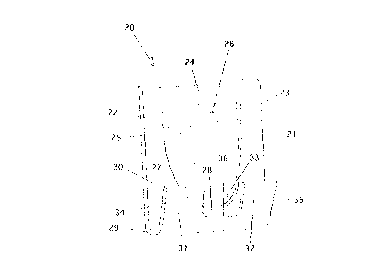Some of the information on this Web page has been provided by external sources. The Government of Canada is not responsible for the accuracy, reliability or currency of the information supplied by external sources. Users wishing to rely upon this information should consult directly with the source of the information. Content provided by external sources is not subject to official languages, privacy and accessibility requirements.
Any discrepancies in the text and image of the Claims and Abstract are due to differing posting times. Text of the Claims and Abstract are posted:
| (12) Patent Application: | (11) CA 2227452 |
|---|---|
| (54) English Title: | TRUCK STRAP FASTENER ADAPTED FOR EITHER HOOK OR 1-BEAM ATTACHMENT |
| (54) French Title: | FIXATION DE SANGLE DE CAMION ADAPTEE POUR ETRE ASSEMBLEE A UNE POUTRE EN I OU A UN CROCHET |
| Status: | Deemed Abandoned and Beyond the Period of Reinstatement - Pending Response to Notice of Disregarded Communication |
| (51) International Patent Classification (IPC): |
|
|---|---|
| (72) Inventors : |
|
| (73) Owners : |
|
| (71) Applicants : |
|
| (74) Agent: | GOWLING WLG (CANADA) LLP |
| (74) Associate agent: | |
| (45) Issued: | |
| (22) Filed Date: | 1998-01-20 |
| (41) Open to Public Inspection: | 1998-07-23 |
| Availability of licence: | N/A |
| Dedicated to the Public: | N/A |
| (25) Language of filing: | English |
| Patent Cooperation Treaty (PCT): | No |
|---|
| (30) Application Priority Data: | ||||||
|---|---|---|---|---|---|---|
|
A truck strap fastener is adapted to enable a strap to be attached to
either a downwardly directed hook or to an I-beam. Flatbed trailers typically
provide either an I-beam or a downwardly directed hook as the point of
attachment for load securing tie-down straps. A fastener is disclosed that is
adapted to attach to either point of attachment, and also to the tie-down strap.
The fastener provides a body carrying left and right prongs which jointly fasten
in place about an I-beam. Alternatively, a hook opening in the body allows a
hook to pass between the left and right prongs and through the hook opening
in the body.
Fixation de sangle de camion adaptée pour être attachée soit à un crochet tourné vers le bas soit à une poutre en I. Les semi-remorques plates sont habituellement équipées d'une poutre en I ou d'un crochet tourné vers le bas servant de point de fixation des sangles d'arrimage de marchandises. L'invention concerne une fixation adaptée pour être assemblée à l'un ou l'autre de ces deux types de points de fixation et aussi à la sangle d'arrimage. La fixation comprend un corps avec branche gauche et branche droite dont l'action combinée assemble la fixation à la poutre en I. Le corps de la fixation comporte également un ouverture d'accrochage permettant le passage d'un crochet entre la branche gauche et la branche droite puis à travers l'ouverture d'accrochage.
Note: Claims are shown in the official language in which they were submitted.
Note: Descriptions are shown in the official language in which they were submitted.

2024-08-01:As part of the Next Generation Patents (NGP) transition, the Canadian Patents Database (CPD) now contains a more detailed Event History, which replicates the Event Log of our new back-office solution.
Please note that "Inactive:" events refers to events no longer in use in our new back-office solution.
For a clearer understanding of the status of the application/patent presented on this page, the site Disclaimer , as well as the definitions for Patent , Event History , Maintenance Fee and Payment History should be consulted.
| Description | Date |
|---|---|
| Deemed Abandoned - Failure to Respond to Maintenance Fee Notice | 2004-01-20 |
| Application Not Reinstated by Deadline | 2004-01-20 |
| Inactive: Dead - RFE never made | 2004-01-20 |
| Inactive: Entity size changed | 2003-01-29 |
| Inactive: Abandon-RFE+Late fee unpaid-Correspondence sent | 2003-01-20 |
| Revocation of Agent Requirements Determined Compliant | 1999-05-12 |
| Inactive: Office letter | 1999-05-12 |
| Inactive: Office letter | 1999-05-12 |
| Appointment of Agent Requirements Determined Compliant | 1999-05-12 |
| Revocation of Agent Request | 1999-04-28 |
| Appointment of Agent Request | 1999-04-28 |
| Application Published (Open to Public Inspection) | 1998-07-23 |
| Classification Modified | 1998-05-09 |
| Inactive: IPC assigned | 1998-05-09 |
| Inactive: First IPC assigned | 1998-05-09 |
| Inactive: IPC assigned | 1998-05-09 |
| Inactive: Filing certificate - No RFE (English) | 1998-04-16 |
| Filing Requirements Determined Compliant | 1998-04-16 |
| Application Received - Regular National | 1998-04-15 |
| Abandonment Date | Reason | Reinstatement Date |
|---|---|---|
| 2004-01-20 |
The last payment was received on 2003-01-17
Note : If the full payment has not been received on or before the date indicated, a further fee may be required which may be one of the following
Please refer to the CIPO Patent Fees web page to see all current fee amounts.
| Fee Type | Anniversary Year | Due Date | Paid Date |
|---|---|---|---|
| Application fee - small | 1998-01-20 | ||
| MF (application, 2nd anniv.) - small | 02 | 2000-01-20 | 2000-01-07 |
| MF (application, 3rd anniv.) - small | 03 | 2001-01-22 | 2001-01-19 |
| MF (application, 4th anniv.) - small | 04 | 2002-01-21 | 2002-01-17 |
| MF (application, 5th anniv.) - standard | 05 | 2003-01-20 | 2003-01-17 |
Note: Records showing the ownership history in alphabetical order.
| Current Owners on Record |
|---|
| GRANT PROFIT |
| Past Owners on Record |
|---|
| None |